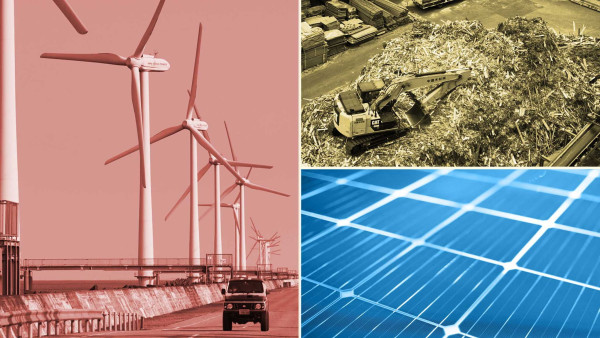
Article 4 / 4
Building a multi-asset portfolio for today's marketThe next generation of sustainable investments

Initially funds with broad mandates are created and, if the asset class proves popular with clients, then funds aimed at investing in just a portion of the market – for example, a smaller companies fund – as investors' understanding of the asset class grows.
While sustainable investment funds have been around for many years, the same pace of innovation has arguably yet to occur.
This is particularly noticeable if one looks at the factor exposure involved. The sectors that many sustainable investors favour include electric vehicles and renewable energy, firmly in the 'growth stock' camp, potentially leaving investors overly-exposed to one style of investing.
Transitioning companies
Shaniel Ramjee, multi-asset investor at Pictet AM, says: “If you take a blunt view of what a 'sustainable investment' is right now, then you are going to end up with a massive exposure to growth stocks. But we think the next phase is going to be more nuanced.
"Capital will flow to the areas of the economy where the greatest change needs to happen and that is the energy sector, and helping the companies that are transitioning from fossil fuels to renewable energy is part of that. It has to be part of it if we are going to achieve the climate targets we need to.”
While the evolution of asset classes is typically driven by active fund houses, Fahad Hassan, chief investment officer at Albermarle Street Partners, says: “If an investor wants to avoid having too much exposure to growth in a sustainable investment portfolio, the best approach available right now might be to own a passive fund.
"Because they have the broadest possible exposure to an asset class, it should mean they minimise the exposure to any one investment style.”
Simon Holmes, multi-asset investor on the Universal fund range at Columbia Threadneedle, says: “The key to the evolution of sustainable investing, the same as it was with every other asset class, will be an increase in the quantity and quality of data available. As we get more data, more styles and ways of investing will emerge."
He adds: "One of the new themes we are looking at right now is companies that help other companies be more sustainable. For example food supplements for cows, which lowers agricultural emissions, or recycling businesses that work with electric car companies.
"Those sorts of businesses have basically evolved in response to the challenges we have begun to understand in more recent years.”
Data can help create more 'S' funds
Kevin Thozet, multi-asset investor at Carmignac, agrees that data is an issue. He says ample data exists around climate issues, which is why so many funds focused on the environment – the E in ESG – exist.
But he says data points relating to the social impact of corporate activity – the S – remain scant, and he says as understanding grows around how to measure this impact, this will lead to the creation of funds that focus on that area, increasing the range of choices for investors.
Among the data points he is looking at in this area are customer and employee satisfaction surveys and staff retention rates in businesses, as he feels this helps him to understand whether potential investee companies are compliant with the social S component of ESG investing.
He says funds that are more focused on a particular theme will become popular in the coming years as “people can understand individual themes very well, there is much less jargon, and clients like that”.
Clive Emery, sustainable multi-asset investor at Invesco, says such thematic funds have been launching in recent years, indicating the evolution is already happening.
He says that when reporting on the ESG criteria of his fund, he reports on 280 line items for each company in which his fund is invested. All of that becomes one fund price the client sees, which shows the scale of the data that is available.
He adds: "I think the evolution that is occurring is driven by client understanding rising. A few decades ago, a fund could be ESG and still have up to 30 per cent in coal. Now it has to be less than 10 per cent in coal. And my view is that the energy transition is important. It is going to require large fossil fuel producers to transition.
"For that reason I don’t think funds that just exclude companies are appropriate for what comes next. I think positive change funds are the next generation of opportunities, but it is important that people who do want to invest in a fund that excludes some categories have the choice to do that.
"That is part of the evolution that is happening. But it is the same evolution that happened in other asset classes.”
Holmes says clients are “becoming more demanding as their level of knowledge increases, and themes such as healthcare are becoming more important. That’s why I think some of the products around now, which just talk about integrating ESG principles into what they do, they won’t be sufficient for the next generation of clients.
"Those clients want to see positive change happening as a result of their investment. I think a financial adviser looking to allocate to sustainable funds will have a palate of options, comprised of both generalist funds and specialist funds that focus on a niche area of the market.
"That approach is often called core and satellite, and has been part of general multi-asset investing for many years.”
david.thorpe@ft.com





